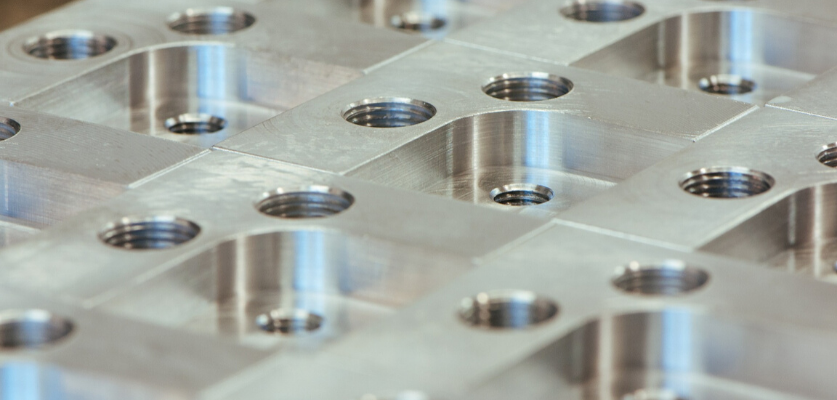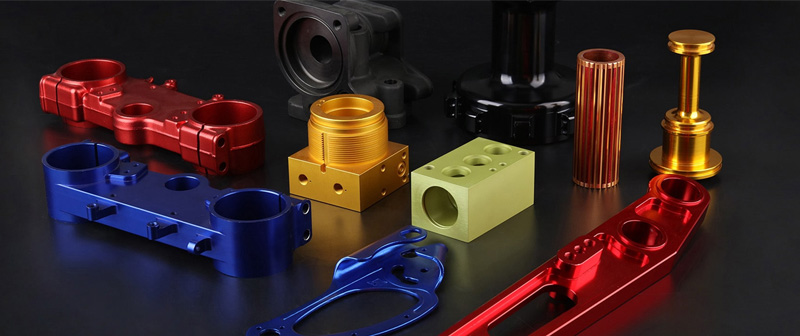The surface finish requirements of the metal parts being manufactured have always been the industry standard. In addition to surface effects, it is also beneficial to the overall integrity, strength and structure of metal parts. Surface treatment will affect the performance of the equipment. If you need to put two parts together, you need a smoother surface so that they can be installed.
What Is Surface Treatment?
Surface treatment is a process of forming a surface layer on the surface of the basic material that is different from the body’s mechanical, physical or chemical properties. The purpose of our surface treatment of products is to make the products meet certain requirements of corrosion resistance, wear resistance, decoration or other special functions. Surface finishing is the process of changing the surface of a manufactured metal part to a desired appearance or surface texture. There are different surface treatment methods and processes for different products.
Why Is Surface Treatment Important In Industrial Manufacturing?
With the development of the manufacturing industry, surface treatment technology plays an important role in the development of it. With the development of science and technology, the requirements of the manufacturing industry on metal surface treatment technology are getting higher and higher. Take the application in the automotive industry as an example. With the rapid development of the automobile industry, people have put forward higher and higher requirements for the ability of automobiles to withstand the external environment and the reliability, stability, corrosion resistance and appearance of the automobile for long-term operation. The surface treatment technology requirements they rely on also getting higher and higher.

Different Surface Treatment Processes
The main types of surface treatment commonly used in machining are: electrostatic spraying, baking varnish, galvanizing, chrome plating, nickel plating, titanium plating, gold plating, silver plating, aluminum anode, impregnation, oil spraying, sandblasting, DLC treatment, Teflon treatment , Black dyeing, cold plating, etc. We are here to introduce several common surface treatment types and their functions.
1. Electrostatic Spraying
Electrostatic spraying uses the action of a high-voltage electrostatic field to move the floating paint particles in the opposite direction of the electric field and adsorb the paint particles on the surface of the workpiece.
A thicker coating can be obtained by electrostatic spraying once, and the powder coating is solvent-free and pollution-free, which improves labor and hygiene conditions. The use of new techniques such as powder electrostatic spraying has higher efficiency, has a good performance for automatic assembly line production, and can be recycled.
2. Electroplating
This usually involves chemical and electrical processes to change the properties of the metal surface. Some examples are chrome plating, nickel plating, zinc plating, etc.
These surface treatment methods are to plate a layer of metal film on the surface of the workpiece in order to achieve the required purpose.
(1) Galvanizing: Mainly to make the surface more beautiful and rust free.
(2) Chrome plating: It can make metal products more durable. Hard chrome plating is mainly used for machinery under high temperature conditions, such as molds. Decorative chrome plating is mainly to make the surface brighter and beautiful in appearance.
(3) Nickel plating: It is deposited on the metal surface by oxidation-reduction effect to improve the corrosion resistance and wear resistance, and increase the beauty and luster.
(4) Titanium plating: prevent pollution, and will not cause allergic reactions in contact with the human body. Because the titanium compound has a variety of colors, it can increase the aesthetic effect. At the same time, titanium has the function of anti-acid, anti-alkali and anti-oxidation.
(5) Silver plating: There are two main functions, one is decoration and the other is functionality. Decorative properties are used for oxidation resistance experiments. Functionality is mainly used in the electronics industry, such as electrodes, wires, electric shocks, and pole pieces.
3. Aluminum Anode
Anodizing of aluminum is mainly an electrolytic oxidation process. In this process, the surface of aluminum and aluminum alloys is usually transformed into a layer of oxide film, which has curing, decorative and other functional characteristics.
Aluminum anodes are mainly used in two aspects: one is when the aluminum is used outdoors, a protective film is formed on the surface of the aluminum after the anode, which can prevent oxidation and corrosion and extend the life. The second type is used in electronics, which can make the surface of the hard disk housing and radiator non-conductive, and protect the circuit and the human body.

4. Impregnation
This kind of microporous penetration sealing process. The sealing medium is infiltrated through natural infiltration, vacuuming and pressurization to fill the gaps. The main function is to achieve the purpose of sealing the gap.
5. Sandblasting
Compressed air power is used to form a telling jet beam to spray the spray material to the surface of the workpiece to be processed at a high speed, so that the appearance of the surface of the workpiece changes. The function of this surface treatment is to effectively improve the fatigue resistance of the workpiece, increase the adhesion between it and the coating, and extend the durability of the coating film.
When Should You Consider Choosing A Surface Treatment?
When choosing a suitable surface treatment method for your parts, it is very important to consider different factors to avoid accidents and unnecessary expenditures. These factors may involve:
Material
You must understand the mechanical properties of the metal parts you will use. Harder materials use harder abrasives for grinding, while softer materials (such as aluminum) may not
Compatible with some of the hardest abrasives. Knowing the material will prevent you from using incompatible tools, which can damage the parts being completed and the tools used.
Application
Each finishing process has its own advantages, depending on its purpose or purpose. Some methods provide beautiful reflective finishes, while others produce matte finishes, which are very suitable as a preparatory step for further coating. You must define the necessary requirements for your part, regardless of whether it needs to be resistant to scratches, corrosion, impact, abrasion, smooth surfaces, or more.
Turnaround Time
In mechanical finishing, the smoother the surface finish, the longer it takes for finishing. Please pay attention to the processing time of the sorting process.
Price
The different factors involved in pricing include processing time, materials, tools and equipment used in the surface treatment process. The longer your processing time, the more expensive your parts.
Conclusion
The final surface treatment technology completes the metal part because it can not only enhance the overall appearance, but also define the quality, durability, and resistance to various factors such as corrosion, impact, abrasion, and tearing of the part.



